A Rural Renaissance
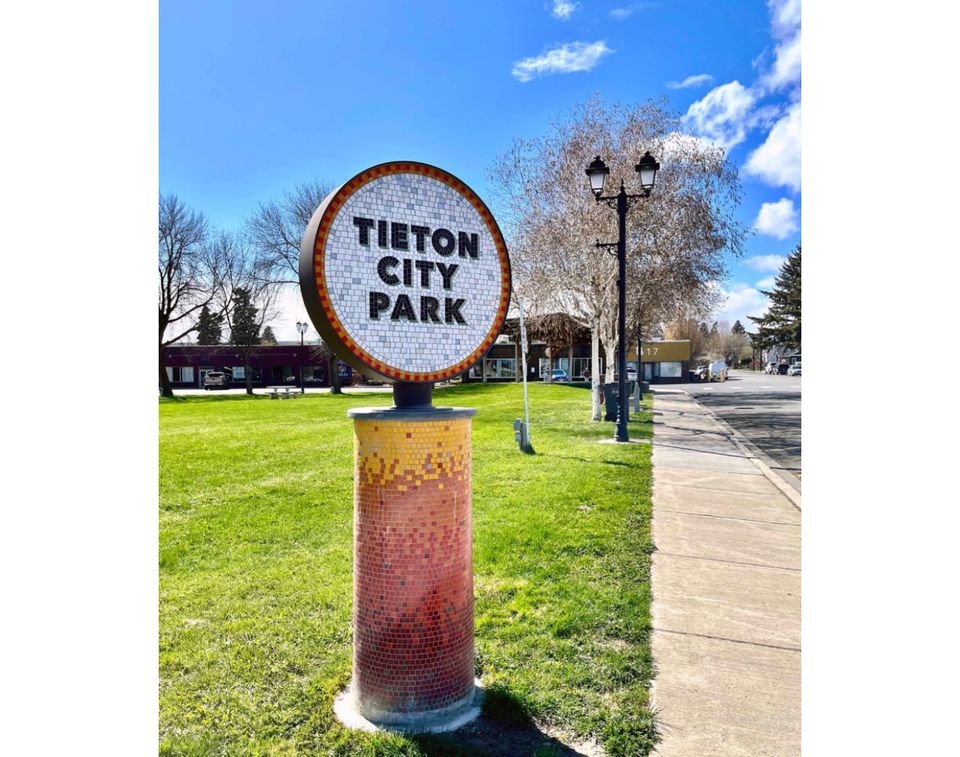
When a group of artists arrived in a small, agricultural town just up a steep back road from Central Washington’s Highway 12 and the Naches River in the autumn of 2007, not even the wildest of wild-eyed, “artiste” dreams could have predicted the cultural and economic transformations that would soon take place in the town itself.
That town is Tieton, and I’m a visual artist and one of the “artistic pioneers” who participated in its early, unusual, and almost magical reinvention. The community and business connections that eventually grew from the initial, creative networking of Mighty Tieton brought new life to a town that had been left behind by technological shifts in the fruit processing industry.
I’ve been a beneficiary of these inspiring new changes for many years now. These transformations have miraculously occurred while the best aspects of small-town life have been preserved. Here, I now enjoy a more peaceful daily atmosphere, access to ongoing cultural events, friendly and interesting neighbors, a new town clinic, in-town dining options, easy in-person access to our little post office, one room library, and City Hall—and all these amenities exist within a 5-minute walk from the Tieton Lofts where I live. In addition, I get a chance to revive and improve my (dormant for too many years) Spanish language skills in a “full immersion” atmosphere if I choose. It doesn’t get any better!
The photo gallery summary below illustrates some highlights of the more recent cultural and entrepreneurial changes that have taken place since the early years of artistic influence. For more detailed information about the various events and entities I outline, the Mighty Tieton website is a helpful and inspiring resource.
Since they are Tieton’s future, I’ll begin my summary by highlighting the benefits that have been extended to our town’s children. All events are supported by Tieton Arts and Humanities (Tieton’s non-profit cultural arm) and the generosity of private donors.
The Fueling Station and Free Children’s Art Classes
Early on in Tieton’s reinvention, local elementary school children gathered nearly every weekend in the Town Square to enjoy the free, summer art workshops that were offered by (newly arrived) volunteer artists. More recently, a permanent art-making facility and community gathering place called “The Fueling Station” was established inside a long-abandoned but now remodeled gas station across the street from that same town square. Through a new program titled “CreARTe”, offered in partnership with the Highland School District, bilingual (English and Spanish) art classes are offered year-round that complement school lessons. Tieton Arts and Humanities also shares office and meeting space with its arts-minded associates in the same, multi-use facility.
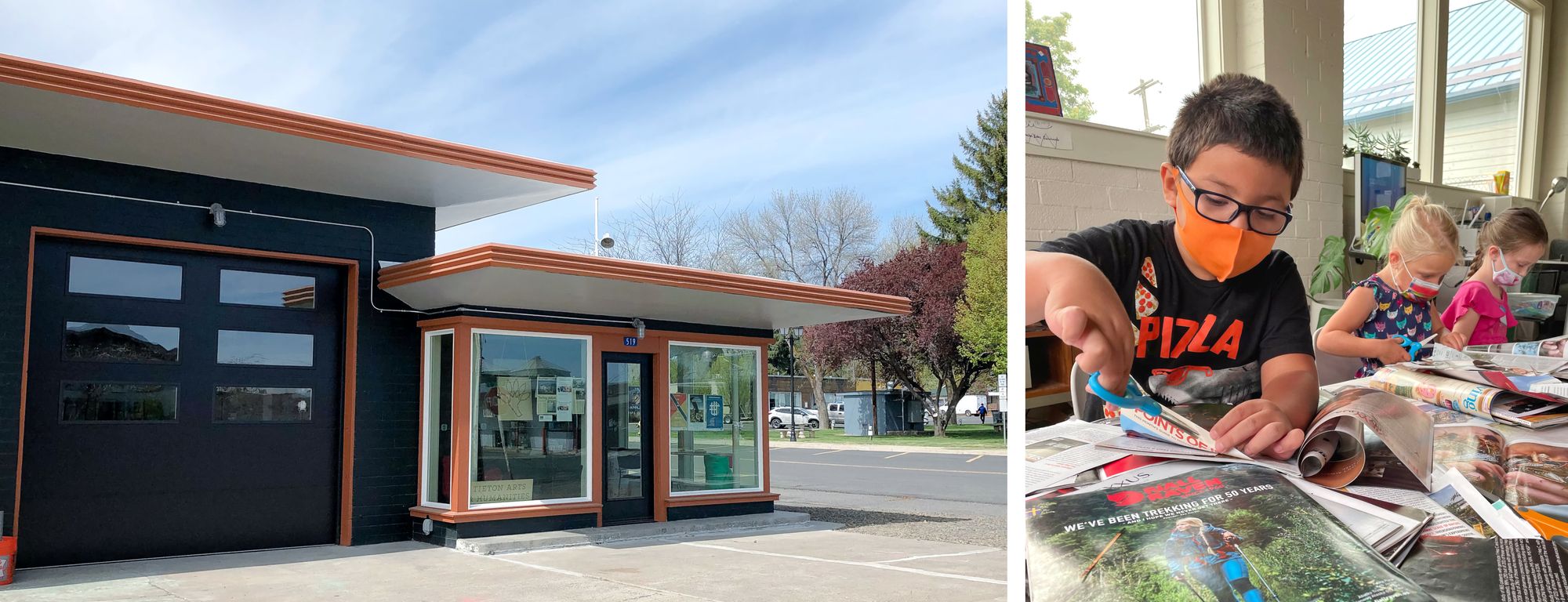
Poetry at the Fueling Station
Throughout the year at the Fueling Station, evening poetry readings by well-known visiting poets help recharge our spirits. And the annual Lit Fuse Poetry Festival amps up the poetic “voltage” by offering in-depth poetry writing workshops that culminate in a festive, evening, open-mike Poetry Slam. This year’s 2023 Lit Fuse lineup promises to be especially exciting.

The Student Art Show
Tieton’s Student Art Show hosts a special annual exhibit that includes art submissions from K-12 students in Tieton and the broader Yakima region. One piece from each of the grades is selected to receive a cash award.
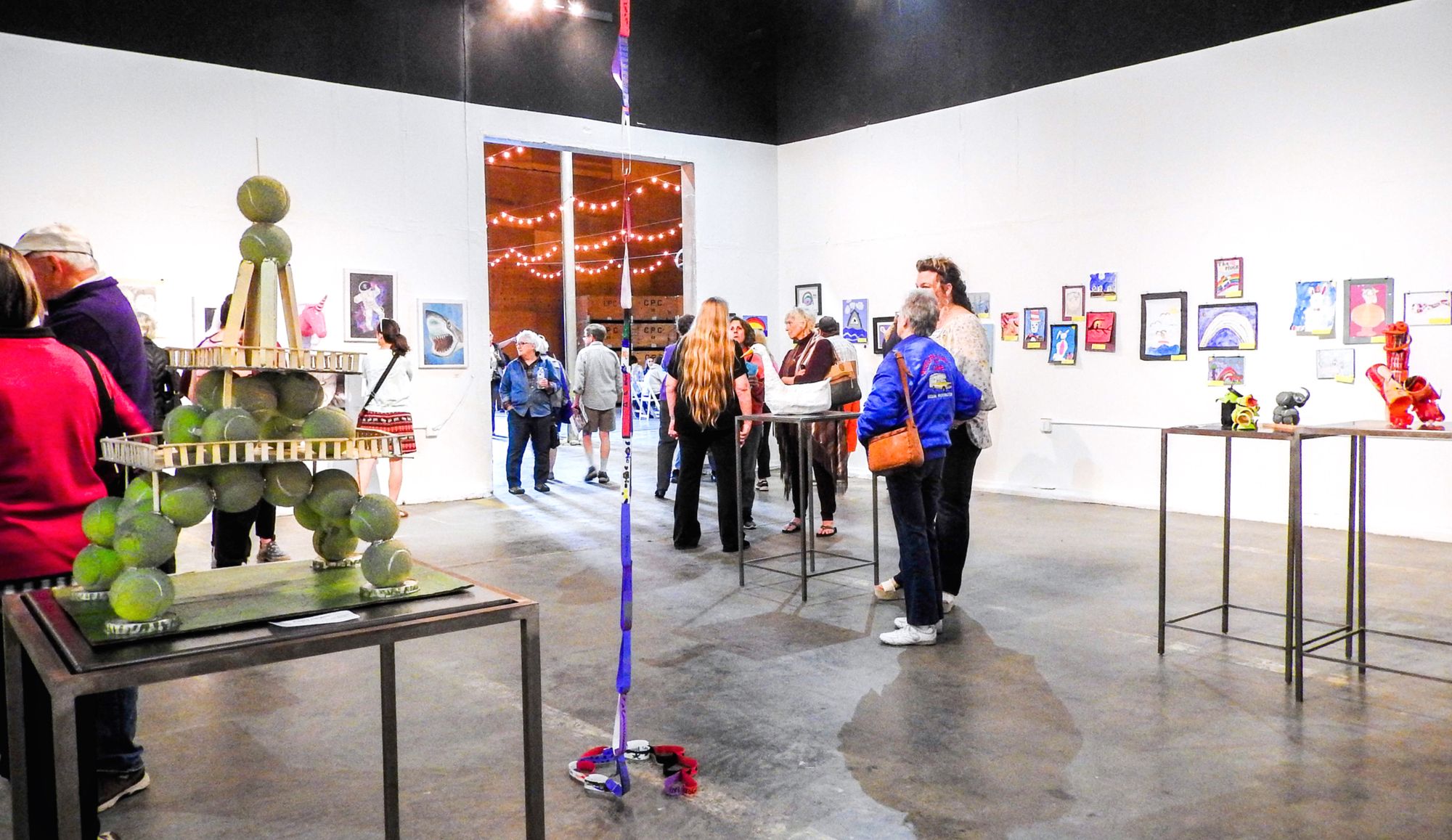
The 10x10 Art Exhibit
The international, 10x10 juried Art Exhibition in the big Mighty Tieton warehouse features small artworks no larger than 10”x10” in any dimension.
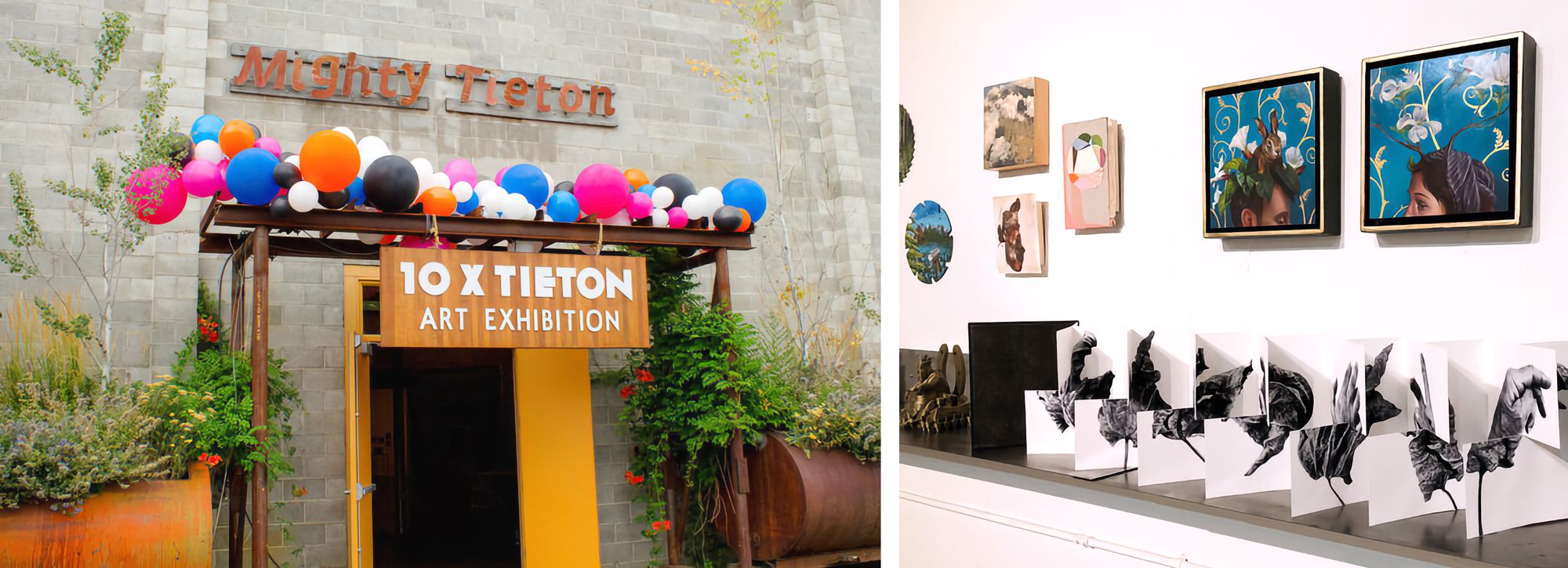
The Day of the Dead Celebration (Dia de los Muertos)
A revered, Mexican, ancestral-honoring community tradition has been reinterpreted here in Tieton with the participation of our vibrant, local, Hispanic community. Every year the celebration features a new, multicolored, almost room-size sand painting by Oaxacan-born visiting artist Fulgencio Lazio. The celebration also includes a community remembrance altar where town residents can honor their own ancestors with flowers, favorite foods, photos, and written messages.
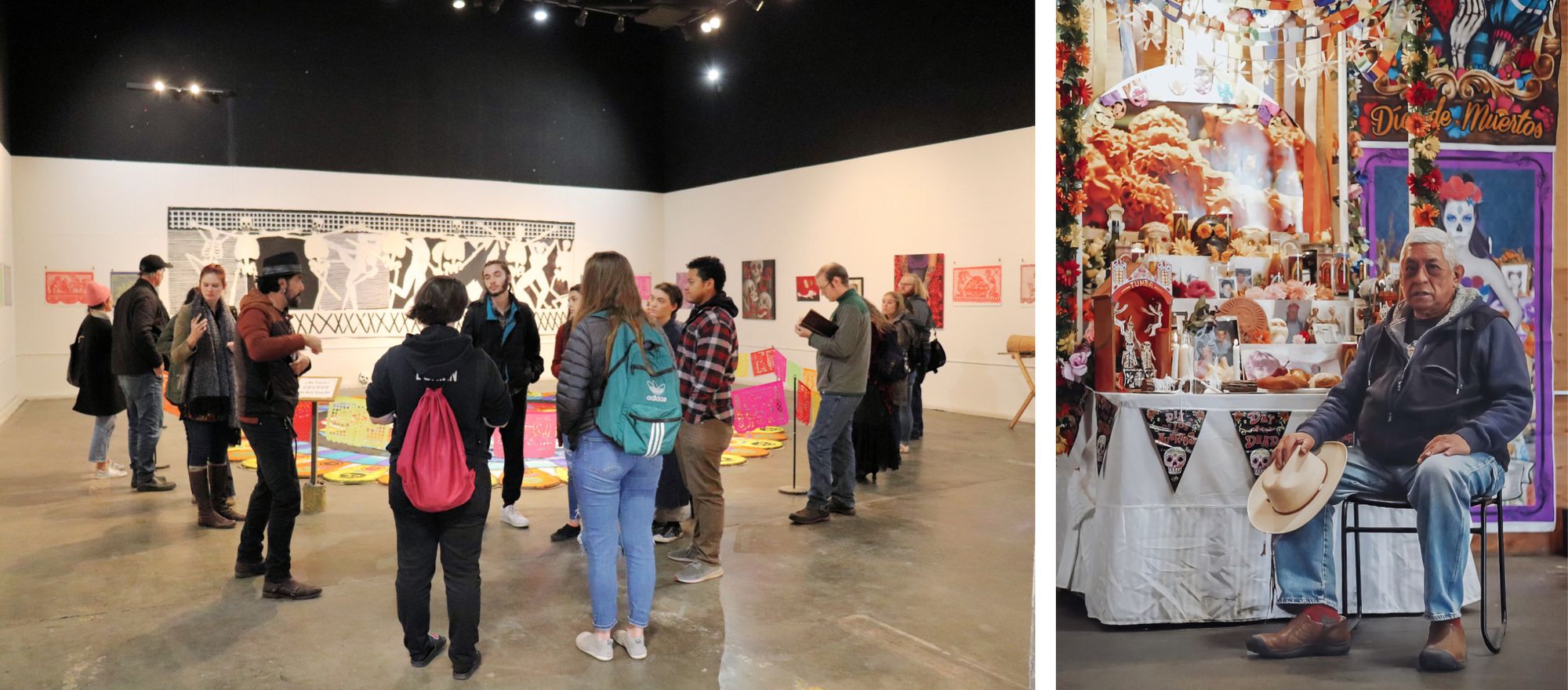
The Boxx Gallery Expansion
The Boxx Gallery, Tieton’s “Little Gallery with the Big Heart” has now been transformed into an even more expansive community space that sponsors special pop-up art exhibits along with in-house workshops and classes hosted by visiting artists-in-residence. The recent course in pine-needle basketry (taught by artist Alma Gomez) sold out within one week. Here are some examples of Alma’s exquisite work from her March 2023 Boxx exhibit:
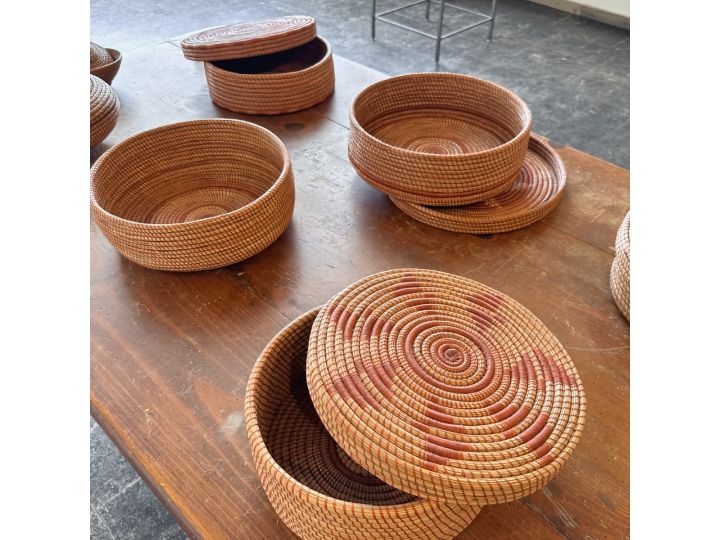
Eating Out
A meal “out” is a treat that should accompany all artistic events. To accommodate both area residents and tourists who come from out of town to be “cultured” by Tieton’s unique artistic charm, several local restaurants and bakeries (Don Mateo, Fernando's, and Santos) offer authentic Mexican pastries and meals to fuel any appetite. Our beloved local bistro, formerly “617 Nomad”, has recently moved to a new, larger location. It is now called Nomad Kitchen and Mercantile and features an expanded, exquisite, ever-changing menu with ingredients sourced from local farms and foragers. Picture the sidewalk café seating coming in warmer weather!
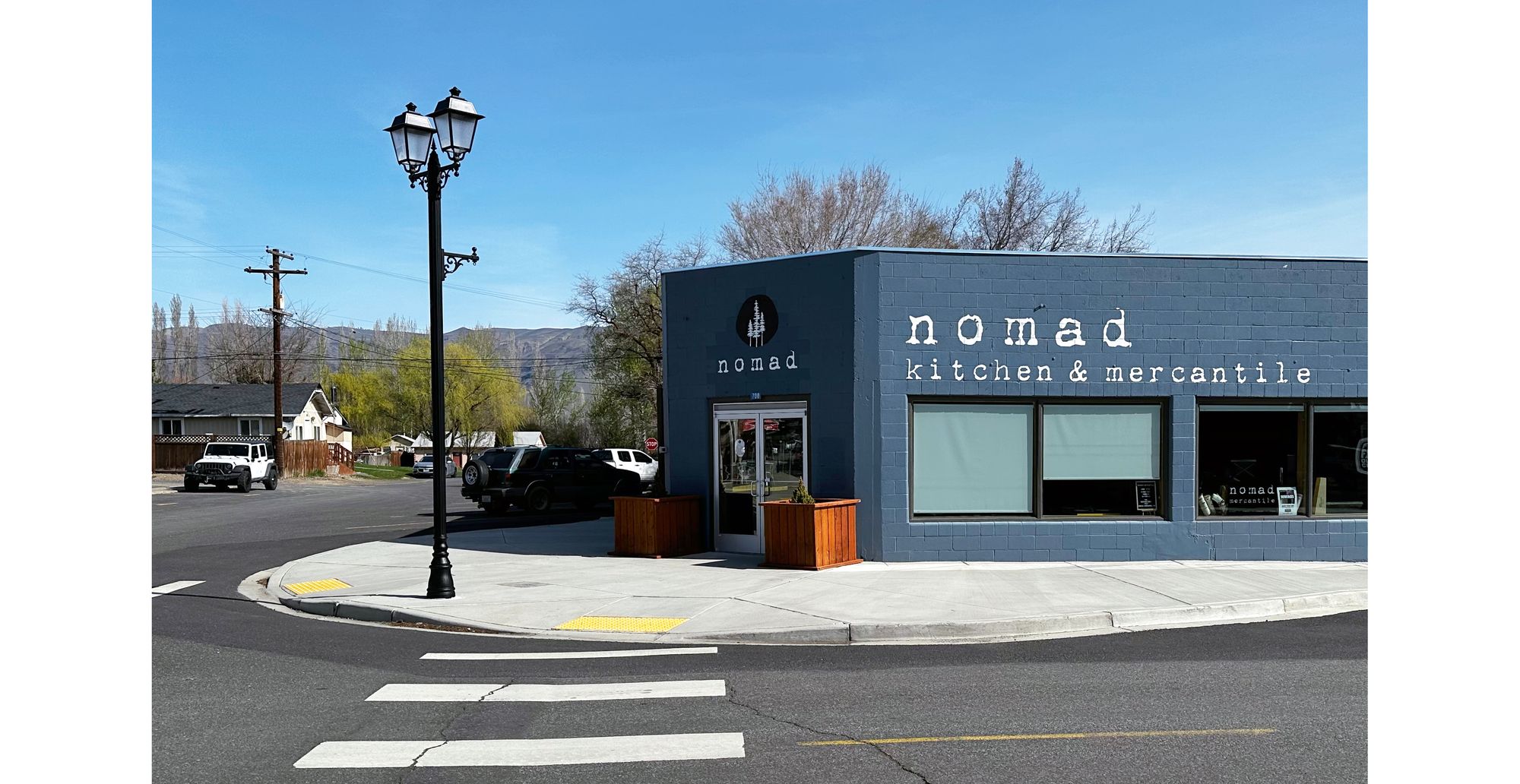
Tieton Cabin Company
One of the newest additions to the Mighty Tieton vision is the Tieton Cabin Company, whose dedication to beauty and functionality has culminated in the manufacture of unique, innovative, and modern cabin designs. As Jeb and Belinda Thornburg, (the company’s architect founders) like to explain:
As a team of artistic craftspeople, we build these cabins with our hands; as avid tech and design enthusiasts, we leverage our minds and the most advanced systems and processes available to make Tieton Cabins efficiently and precisely.
Did I say the cabins were sleek and elegant, with serene attention to detail?
See for yourself:
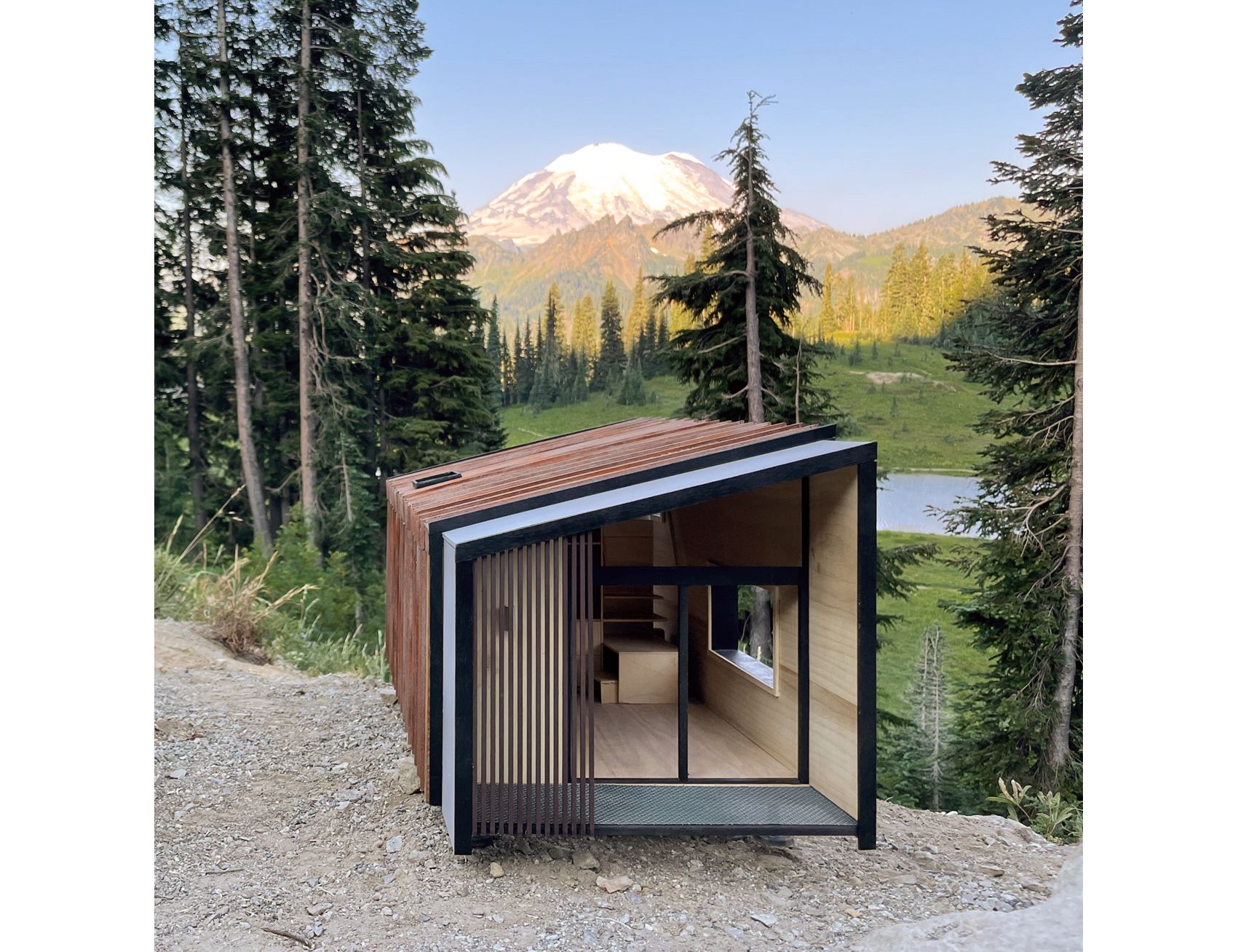
Tieton Mosaic
I’ve saved space here at the end of my “New and Expanded” visual summary of Tieton success stories to feature information about one of the town’s most unique and creative triumphs—the Tieton Mosaic Studio, established in 2013 by Mighty Tieton founder and visionary, Ed Marquand. Initial projects from the studio focused on creating mosaic signage to identify Tieton as an artistic, entreprenurial hub. But the studio’s inventiveness, skill, and expertise soon became recognized far and wide.
In his inimitable, “can do", prophetic manner, Ed Marquand outlined his thoughts and dreams for Tieton Mosaic’s future:
So many small, rural, agricultural towns are struggling and trying to figure out their narratives. Everyone wants the past. Everyone wants Mayberry. The whole thing with Tieton is we’re trying to figure out what businesses can make sense. But I think the mosaic project has the potential to attract national attention.
And national attention it did attract. The National Endowment for the Arts awarded Tieton Arts and Humanities, in collaboration with Tieton Mosaic, a $45,000 “Our Town” grant to design and install large mosaic panels around Tieton. The panel designs were based on vintage fruit labels from local orchards.
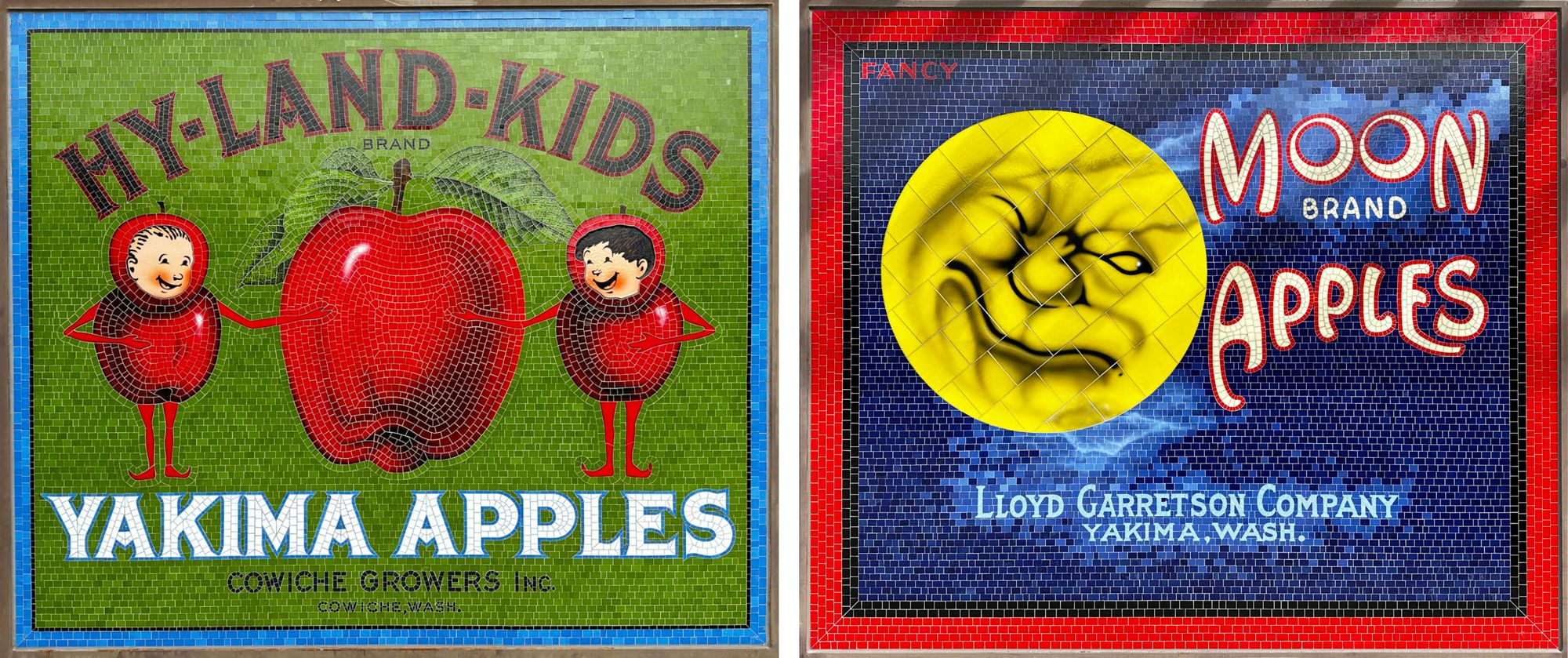
And the latest triumph in the ongoing story of Tieton Mosaics? In late 2020 the King County Regional Transit Authority awarded Tieton Mosaic Studio the contract to fabricate 8, 6x12 foot, spectacular mosaic recreations of artists’ original work, to be installed in newly constructed Sound Transit light rail stations in Redmond, Washington.
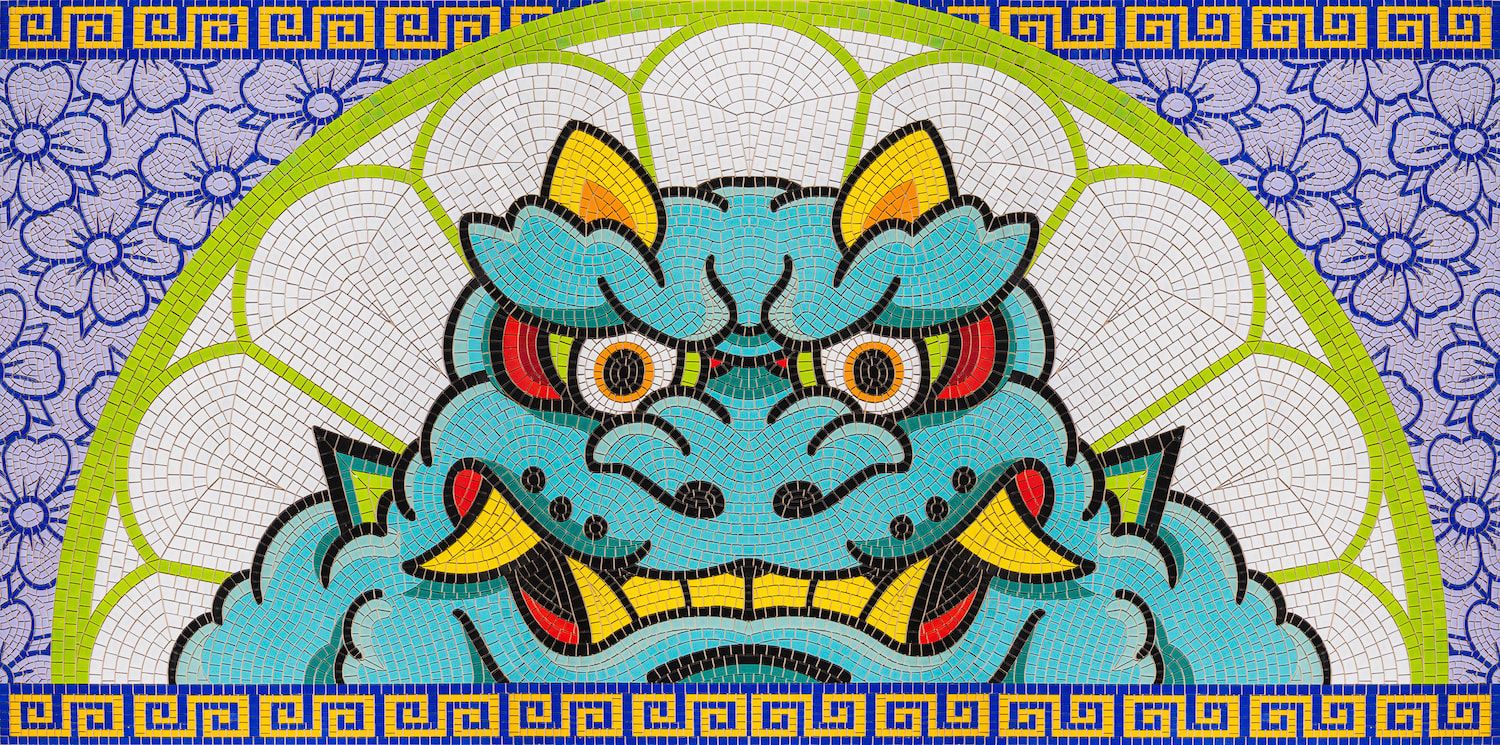
The tiny, agricultural town of Tieton—perched on a plateau just up the steep hill from Highway 12—clearly held dormant possibilities just waiting to be born in the future. Sometimes those wild-eyed (but carefully researched) “artiste” dreams do come true in the most surprising and inspiring of ways.
Totem Rock Revelation
The huge, black rock that towers above a pristine curve of the Naches River just south of Route 410 has no “official” name that I know of. But when I passed it on my unplanned detour through the rolling hills of Central Washington in the mid-1990’s, the term “Totem Rock” suddenly appeared in my fanciful artist mind as the perfect description. To me, the rock seemed to embody a distinctly “guardian” presence that was somehow in touch with the hidden spirits, secrets, and activities of the surrounding high desert landscape.
I had never forgotten the story and photos I discovered in my October 1993 Sunset magazine, which featured two men enjoying their tiny cabin tucked away in the wild-flowered, high-desert hills somewhere “near Yakima.” And when I first saw Totem Rock a few years later, I realized again how attracted I was to this sunny, rural landscape.
One sweltering summer afternoon in 2011, two neighbors from the Tieton Lofts, Gail and Claudia, (both longtime friends of Ed Marqaund), invited me to join them for a much-needed cool swim at an unknown (or so I thought) location on the Naches River.
We piled into one car and headed down the steep road to Highway 12. Within 15 minutes, we were on Route 410 headed west towards the entrance to Chinook Pass. At a bend in the road near a small, unmarked parking lot I saw a tall, black form ahead in the distance, standing above the Naches River below. It was my old “Totem” rock friend (and Central Washington tour guide) that I had seen on my exploratory, Route 410 solo drive-by 18 years before. I felt immediately comforted.
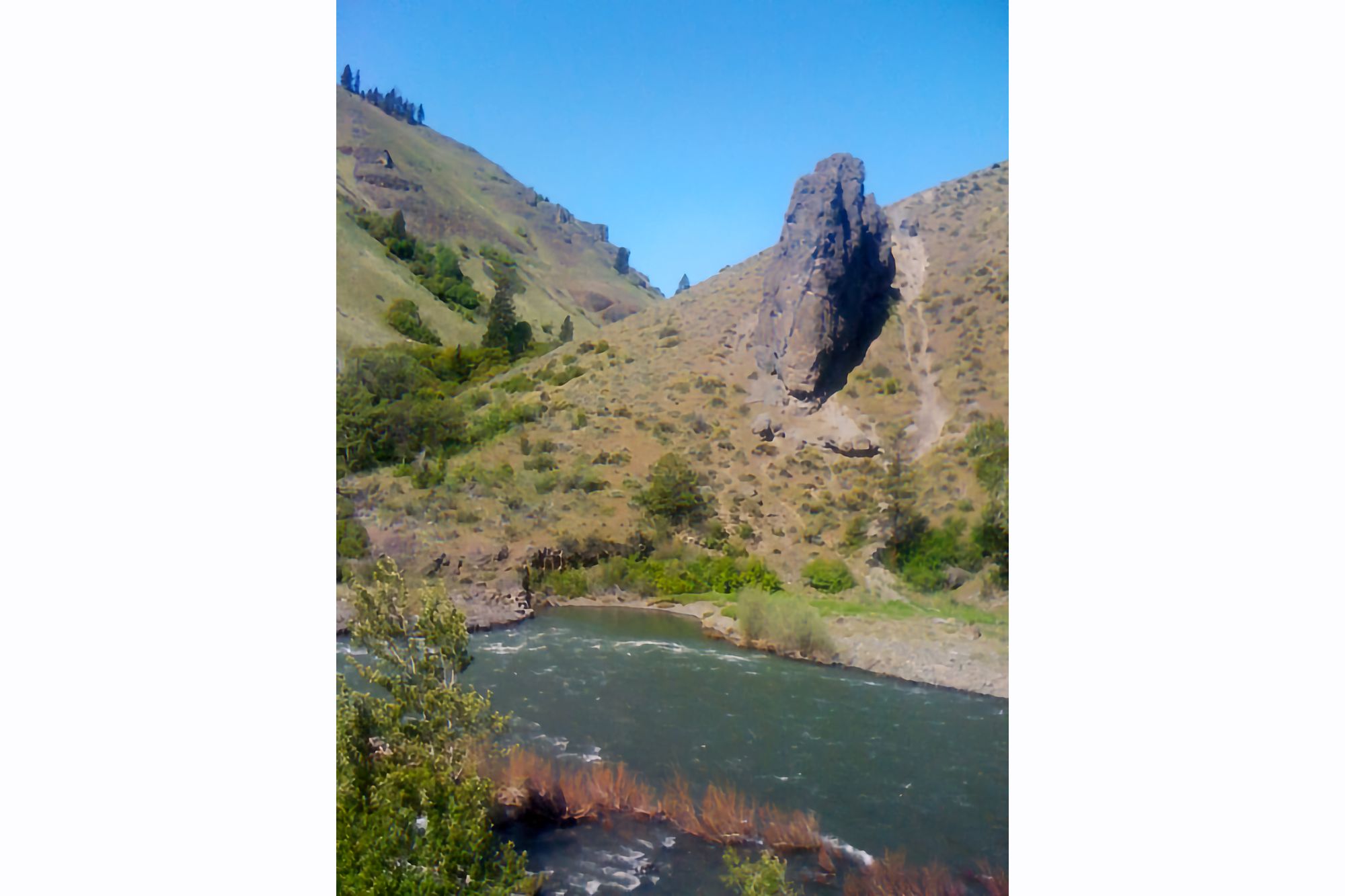
After our delicious swim in the Naches River, my friends and I returned to shore for a picnic and a rest. I was dreamily enjoying the view and memories of my rock guardian across the river when the sound of Claudia’s voice interrupted my historical reveries:
Hey Sandra! Have you ever been to Ed’s cabin? It’s just up route 410 off a road back in the hills close to here. It’s really cool and was featured in an old Sunset magazine article.
I was stunned to silence by Claudia’s surprise revelation, which finally brought 18 years of hidden, life-path scripting to consciousness. I replied that I had known nothing about the cabin's owners until our swimming adventure that day.
The Sunset cabin I discovered in 1993 belonged to Ed Marquand and Mike Longyear, the two men who were pictured in the photos enjoying their peaceful getaway in the surrounding green hills.
Ed and Mike have been my neighbors directly across the hall in the Tieton Lofts since 2007. It was through Ed’s book design work for me that we first met in the early 2000’s. Later, we renewed contact when I received his invitation to attend the Tieton Lofts open house. And Ed’s friend Phillip Christofides was the same architect who designed both the unconventional cabin and the Tieton Lofts many years later.
Since my mid-twenties, I’ve made it a priority to welcome, respect, and actively listen to the ongoing, spontaneous, and mostly wordless directives that appear to exist outside the boundaries of “normal” everyday conversation. I treat their presence as honored guests.
After all these years of habitual, intentional listening, I still stand by my original explanation of how this unusual, subconscious transfer of information works for me:
These messages always carry their own logic and purpose, but the time it takes to clarify their meaning and direction can’t be easily predicted. The intention of each message eventually comes into focus according to its own unique schedule.
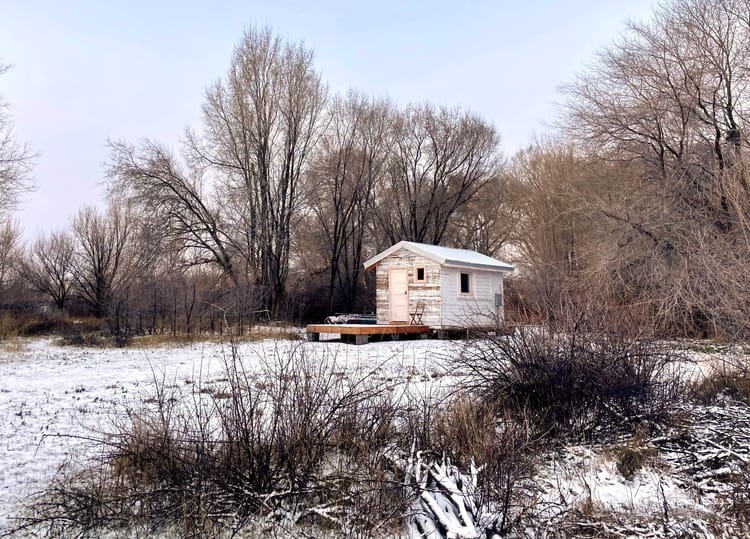



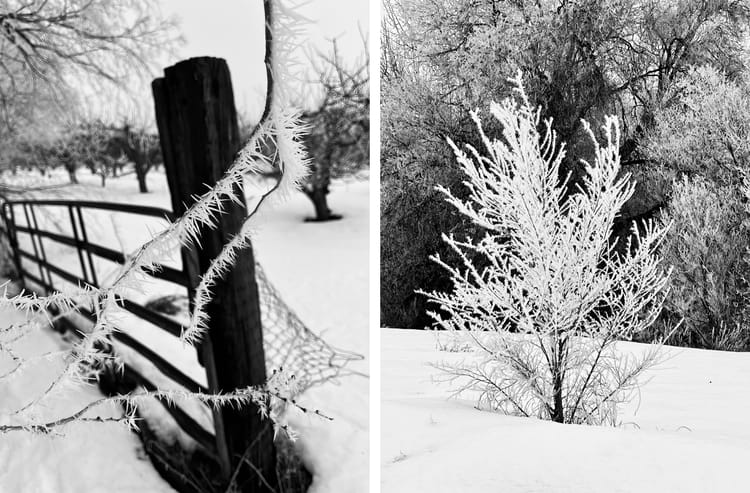
Member discussion